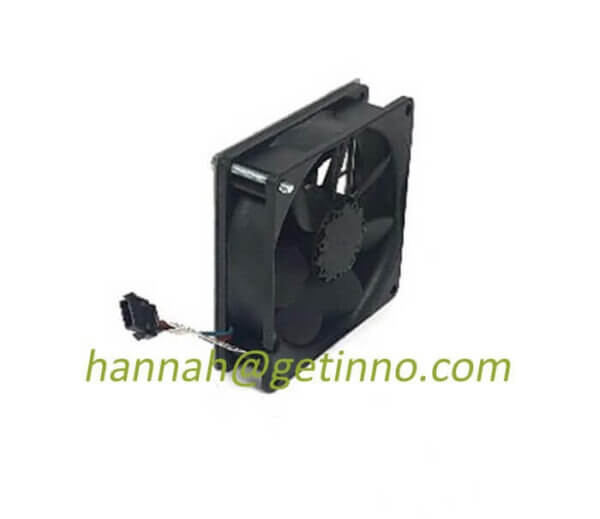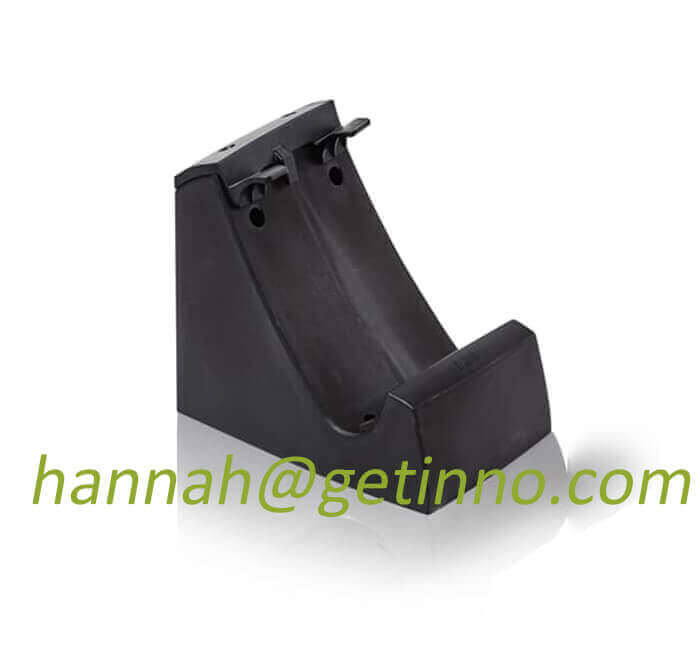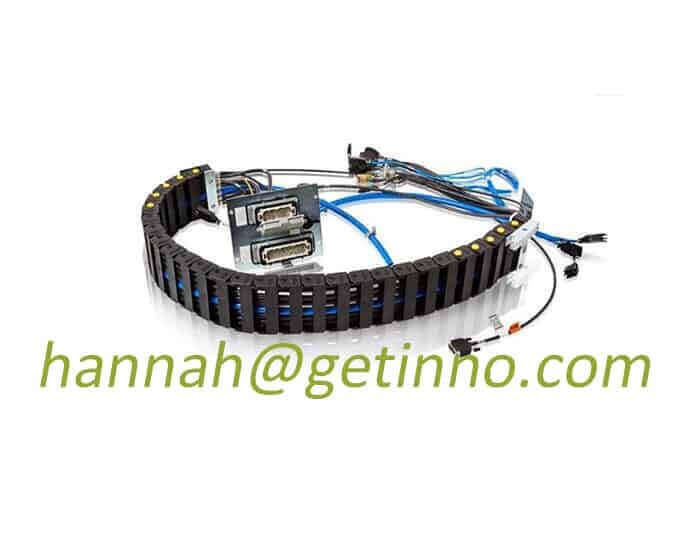The big cow company’s medical exoskeleton robot has been approved by the FDA, the price is half the same, and it is planned to be launched in 2020
The study of exoskeletons dates back to the 1960s and was first used in the military field to enhance the load capacity of soldiers. Then it gradually entered the civilian field, mainly in the medical field and Industrial production field.
As an auxiliary tool, exoskeletons have two major roles in the medical field: first, to help patients with rehabilitation training; second, to help disabled people gain mobility. At present, the medical exoskeleton on the market is mainly based on the first function, and the exoskeleton is being developed in the direction of high control and high flexibility.
For exoskeleton research, most countries are still in their infancy, and commercial products are still few. Among them, the United States, Japan, Israel, South Korea and other countries have strong R&D capabilities, and representative companies include SuitX in the United States, ReWalk Robotics in Israel, EKSO in the United States, Cyberdyne in Japan, Parker Hannifin in the United States and Hyundai Group in South Korea.
How can exoskeleton Robots help patients with rehabilitation training? How to help patients gain mobility? What does the future of exoskeleton robots look like? With these questions, the reporter called Jack, the head of SuitX in China.
The market needs exoskeleton robots
The rehabilitation industry in my country is still in the developing stage. In terms of rehabilitation awareness, most patients do not think that rehabilitation is a very necessary process. The rehabilitation process is also not perfect. After most patients leave the acute stage, there is no corresponding rehabilitation stage, resulting in a high disability rate. The scarcity of rehabilitation physiotherapists is also a major problem restricting the development of my country’s rehabilitation industry.
According to the number of stroke patients in my country, more than 400,000 rehabilitation physiotherapists are needed, but there are only about 20,000 rehabilitation practitioners, which is nothing short of a drop in the bucket.
In response to the lack of rehabilitation physiotherapists, the emergence of exoskeleton robots has brought new hope to my country’s rehabilitation industry. Robots are tireless and ideal for repetitive, physically demanding activities.
During the rehabilitation process, the patient needs the assistance of multiple rehabilitation physiotherapists, which consumes a lot of manpower. In foreign countries with more serious aging and higher labor costs, there is also an urgent need for robots.
The robot can have many built-in sensors to achieve the effect of real-time detection of the state of the human body. The robot does not need to rely on the experience or knowledge background of the rehabilitation physiotherapist to make an assessment, and can pre-implant a variety of algorithms to provide intelligent training based on real-time data to achieve better rehabilitation effects.
Since 2012, the Ministry of Science and Technology has issued a special plan for the development of intelligent manufacturing technology, which clearly stated that it will focus on the development of technology products such as safety robots and medical rehabilitation robots.
In 2015, the 13th Five-Year Plan for the robotics industry also stated that it is required to realize the demonstration application of robots in key fields such as helping the elderly and the disabled, consumer services, and medical fields, and to carry out research on core components, development of cutting-edge common technologies, and application of medical rehabilitation robots. and other key work.
Jack told reporters: “SuitX’s medical exoskeleton robot PHOENIX can help patients gain mobility, which is a big market. PHOENIX can also help patients with rehabilitation training, and the market for robot rehabilitation exceeds 10 billion.”
PHOENIX has been approved by the FDA, and is suitable for patients with status paraplegia, stroke hemiplegia, multiple sclerosis, lower extremity joint injuries, as well as the elderly with mobility problems and patients who need rehabilitation training. Jack introduced: “The original purpose of PHOENIX’s design is to help paralyzed patients gain a certain mobility, to help people with loss of function or inconvenience to restore their normal mobility, and to help people who need to resume training due to diseases to perform rehabilitation exercises.”
How does PHOENIX help patients?
So how does PHOENIX help patients achieve these goals? Jack introduced: “The entire weight of the PHOENIX is only 12 kilograms, and there is a possibility to further reduce the weight. The future target is less than 10 kilograms. The weight of the PHOENIX can completely allow the disabled to wear the exoskeleton by themselves.”
“The PHOENIX exoskeleton robot also adopts a modular design concept, providing modular exoskeleton components for patients with different degrees. For example, for patients with hip or lumbar spine injuries, only the waist and hip exoskeleton components need to be worn; for knee Patients with joint injuries only need to bring the knee exoskeleton assembly.”
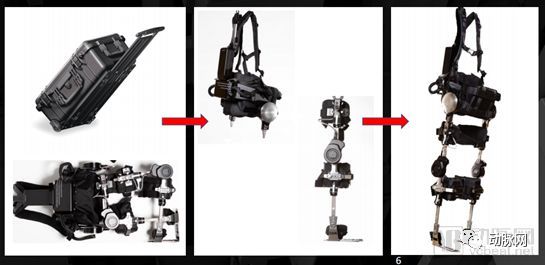
PHOENIX modular design, easy to carry
According to Jack, PHOENIX includes 1 hip joint module, 2 knee joint modules, and 2 foot modules. The user can use it alone or in a full set, and the user can adjust the height of the PHOENIX and the size of the legs according to their own conditions. PHOENIX also prepares two crutches for users, and users can choose to walk, stand, sit and other modes according to their needs.
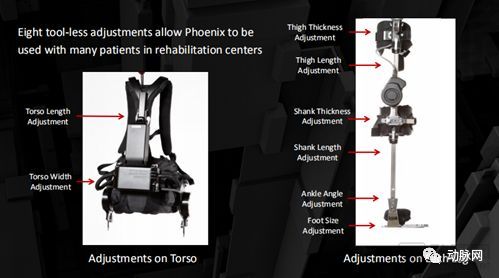
Users can adjust PHOENIX according to their own situation
In the case of full use, the user can wear the PHOENIX for 4 hours of uninterrupted walking after charging. For daily use, the PHOENIX has a battery life of about 8 hours. The average walking speed of the user is 1.77 kilometers per hour, and the maximum speed depends on the user’s situation.
In addition, PHOENIX has been greatly optimized in terms of control, especially in terms of software design, which is more in line with the user’s behavior, making the exoskeleton robot more intelligent. SuitX will upload the data worn by users to the cloud, improve equipment based on big data, and continuously optimize user experience.
In terms of price, PHOENIX is one-half the price of other similar products on the market. Jack introduced: “PHOENIX’s original design intention is to develop an exoskeleton robot that can be used in industrial quantities and suitable for individual users. Therefore, we are actively seeking opportunities for manufacturing in China, hoping to reduce the price of individual products directly to the level that individual users can accept. s level.”
At present, the SuitX exoskeleton has been sold in more than 40 countries around the world, including the United States, the United Kingdom, and Canada. PHOENIX enables many people to stand up and gain the ability to move (walk) in medical settings, workplaces or home settings, allowing users to communicate head-to-head with relatives, colleagues, and friends.
As a professional developer of exoskeleton robots, SuitX was born out of the Mechanical Engineering Laboratory of the University of California, Berkeley. The University of California, Berkeley, is one of the first institutions in the world to study exoskeleton robots.
Backed by the University of California, Berkeley, an assembly center will be established in China
The founder and CEO of SuitX, Prof. Homayoon Kazerooni, is Director of the Robotics and Ergonomics Laboratory at Berkeley, and is also the Director of Exoskeletons, Robotics, Control Science, Human-Machine Systems and Augmentation, Bioengineering, Mechatronics Design, Intelligent Assistive Devices and The leading expert in the field of power and thrust.
The 7 members of the SuitX project team are all from the Robotics and Human Engineering Laboratory of the University of California, Berkeley. They all have doctoral degrees and have nearly 10 years of experience in the field of Robotic exoskeletons. Jack introduced: “The project team led and participated in the development and manufacture of a number of major exoskeleton robot products.”
According to the in-depth article of Arterial.com, “Billions of Rehabilitation Markets to Be Activated, Hundreds of Thousands of Talents Are Looking forward to “Iron Man”, when will exoskeleton robots land? 》, the research and development of exoskeleton robots requires a university background, so that it is more competitive in technology; it requires qualified production, which is conducive to the commercial transformation of technological achievements; it is necessary to develop and reduce prices, and to open up the home market, so as to help while making profits. More patients are also conducive to feeding back scientific research.
SuitX, backed by the University of California, Berkeley, has sold exoskeleton robots in more than 40 countries. Jack said: “SuitX will set up an assembly center in China and sell exoskeleton robots in the Chinese market. It is expected that the products will be available in the second half of 2020. In terms of production, in the initial stage, we expect to produce 3,600 sets of products per year.”
Regarding the future product development direction, Jack revealed: “The first is intelligence. The future development direction of medical exoskeleton technology must be to improve the machine’s ability to recognize human motion intentions, improve exoskeleton motion control, and optimize exoskeleton joint power. Second It is cost-effective, we hope to develop a lighter and more miniature exoskeleton robot that ordinary people (603883) can use. Finally, our vision is that SuitX can become the world’s first-class exoskeleton robot research and development company to help more patients .”
Jack finally said: “At present, SuitX is preparing a new round of financing for the landing of the production and assembly center in China, CFDA application and market promotion.”
The Links: 3BSE066495R1 3BSE018135R1
Pre: Looking forward to the opportunity of... Next: Ecovacs Robot serves as a senior fitn...

